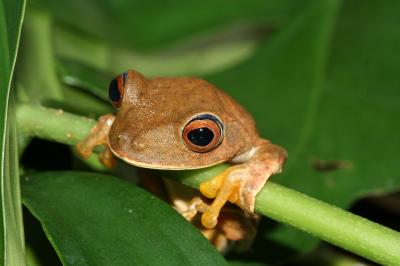Finding the hottest of the hotspots
 Biodiversity hotspots are geographic areas that have both high endemism and high risk for species extinctions. Since the inception of the term two decades ago, these areas have been the focus for conservation projects attempting to save their disproportionally high numbers of endangered species.
Biodiversity hotspots are geographic areas that have both high endemism and high risk for species extinctions. Since the inception of the term two decades ago, these areas have been the focus for conservation projects attempting to save their disproportionally high numbers of endangered species.
With science funding on the decline and a shortage researchers available, however, the support and manpower to identify these hotspots – by traditional sampling and diversity analysis – is dwindling. Researchers at Berkeley have thus developed a model that helps identify hotspots within hotspots without leaving the laboratory.
The model uses past climatic data and information on species’ current ranges to predict their past distributions. If the model predicts that many animals have co-occurred in one area for an especially long time, that area is deemed stable and able to support a diversity of life – regardless of climatic fluctuations. Their paper highlights one example: three species of tree frogs in the Brazilian Atlantic rainforest, where clear-cutting for sugar-cane farming has left only an estimated 8 percent of the original area remaining.
If these populations are, in fact, quite old, then they should display the higher genetic diversity characteristic of populations that have evolved in concert in a specific area. Lead author and Berkeley post-doc Ana Carolina Carnaval and her coauthors tested this assumption and, sure enough, areas predicted as “stable” by their model had higher levels of genetic diversity than unstable areas.
The bottom line for the eastern Brazilian Amazon? The model predicts that the central Atlantic forest has been stable from a climatic standpoint and likely supports a highly diverse community. With so many species, the area should be made a conservation priority by the Brazilian government.
Carnaval thinks their model will help identify hidden diversity in areas that haven’t been sampled exhaustively. Through their method, conservation biologists could save the time and resources required to sample by more traditional methods. A model like this, if made user-friendly, could indeed be a very powerful tool for honing in on specific areas for conservation efforts.
Read the paper here (subscription required).
Ana Carolina Carnaval, Michael J. Hickerson, Célio F. B. Haddad, Miguel T. Rodrigues, Craig Moritz. (2009) Stability Predicts Genetic Diversity in the Brazilian Atlantic Forest Hotspot. Science 323:785-789.
DOI: 10.1126/science.1166955
Photo credit: Ana Carnaval, University of California Berkeley